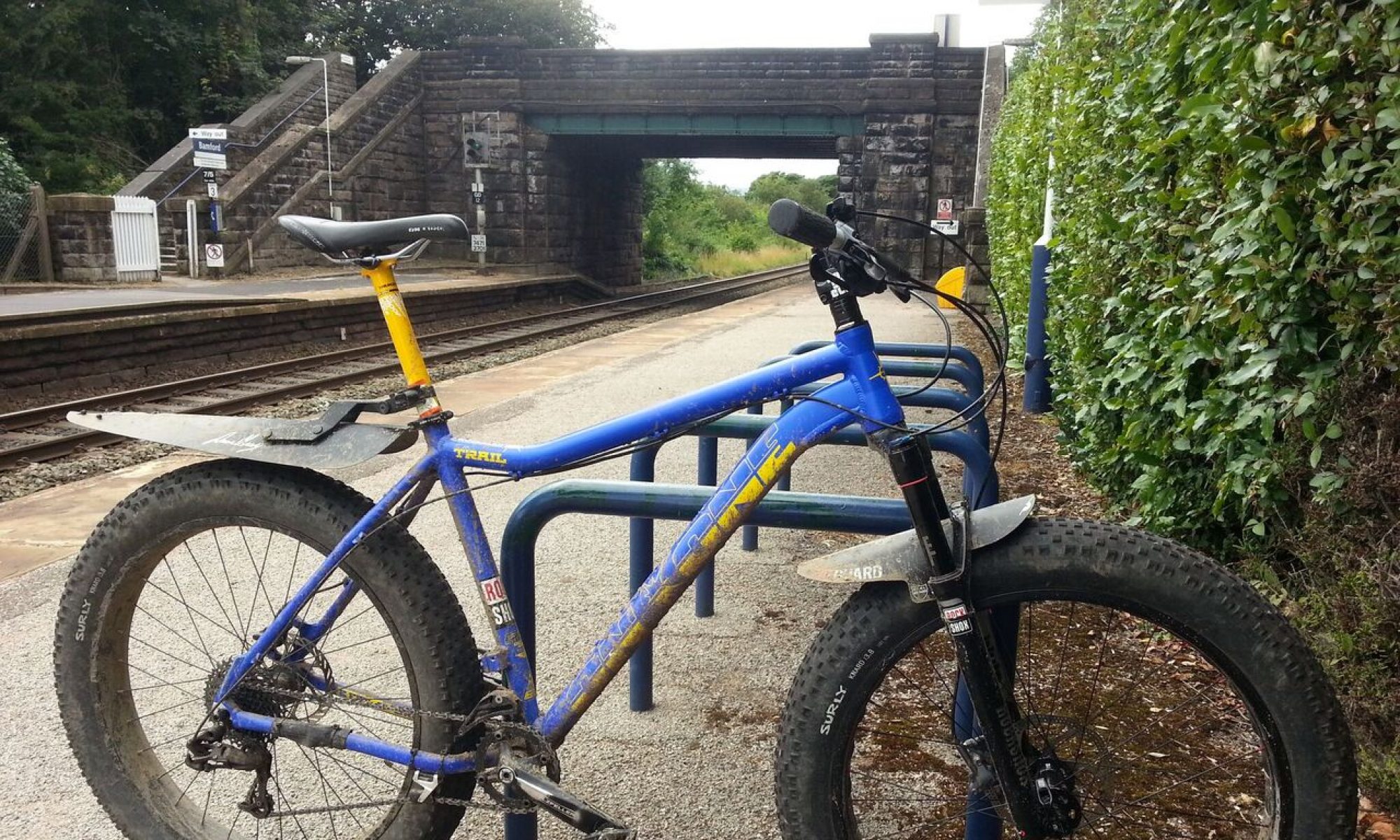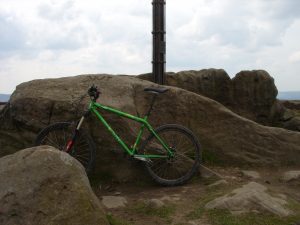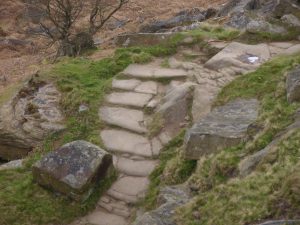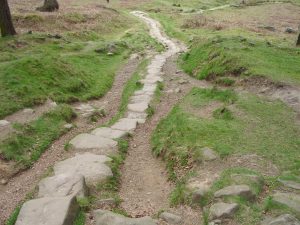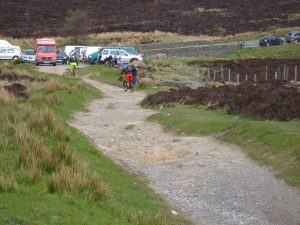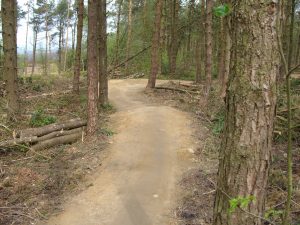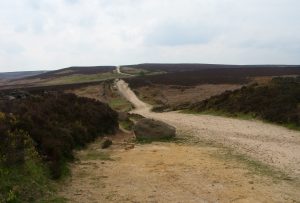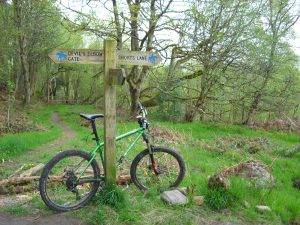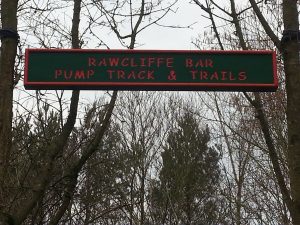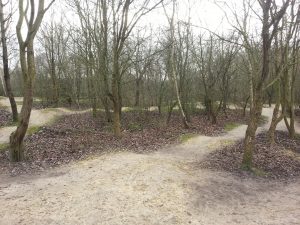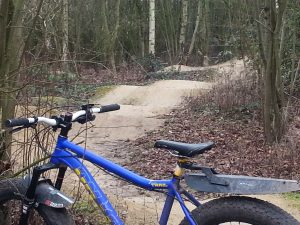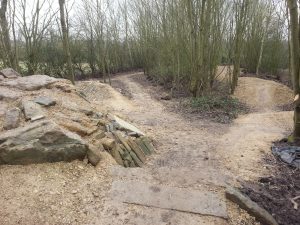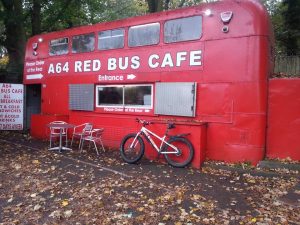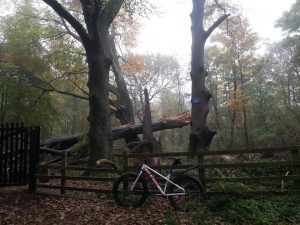- Nearest station: Hathersage (but I prefer riding from Sheffield, rather than changing trains)
- Guidebook: Peak District Mountain Biking (Jon Barton) : Route 20 covers most of it
- Trails: Natural, rocky, some technical, plus purpose-built bike trail at Lady Canning’s
- Other attractions: Views
The Peak District is renowned as one of the country’s top mountain biking areas, and its decent rail links make it nicely accessible to those taking the car-free approach. When visiting by train, Sheffield makes a good starting point (you can change trains to get further into the Peaks, but I generally ride out from Sheffield for the routes described here).
After a leisurely ride out through park land alongside Porter Brook, followed by a sharp climb up a gravel road known locally as “The Bastard” (Confession: I’ve always ended up pushing here), country roads lead past the three reservoirs at Redmires, before a wide bridleway called the Long Causeway leads up towards Stanedge Pole (which is near Stanage Plantation; why the inconsistent spelling?). I’m pleased to report that there is, once again, an actual pole here (the old one having been removed in 2015 due to decay):
Stanage Plantation
Before riding this trail, ask yourself one question: “Do I like rocks?”. If the answer is no, you’ll want to skip this bit, as the Stanage Plantation route is all about the rocks. One the way up, the Long Causeway has a trail of stone slabs along much of its length; it may be worth using this for practice.
The Plantation route starts with a few good-sized rock steps, leading down to a hairpin at the edge of the cliff, followed by a steep stone causeway along the cliff, descending into the plantation. Look out for other trail users on this bit, and on the trail as a whole; Stanage is popular with walkers and rock climbers as well as mountain bikers, and can get pretty crowded.
Lower down, after a tricky stream crossing, the trail widens a little. This gives a smoother, easier alternative route down the side of the stones, but if you’ve got this far without incident, you don’t need that.
If you don’t fancy all the rocky stuff, there’s an alternative route, known as Stanage Causeway, which takes a longer, gentler path around the cliffs. This used to be a popular option, described in the guidebook (Barton, 2010) as “wide and loose over rubble”. However, between then and now, this trail has been “improved” (or ruined, depending on your perspective), and isn’t much of a challenge any more (there are still some nice drainage bars to hop, but it doesn’t compare to the Plantation). Of course, if you want to session the Plantation descent, the Causeway makes a handy way back up.
Lady Canning’s Plantation
The ride from Stanage to Lady Canning’s is a long, slow road grind, punctuated by a nice rocky descent that cuts a corner off the road near a small car park. This is too short to be worth the ride on its own, but it’s a good diversion if you’re heading that way already:
Lady Canning’s Plantation is the site of a recent, and ongoing, trail development (more information here). Unlike most of the other trails nearby, this is purpose-built for mountain biking, so you shouldn’t run into walkers or horses there. So far, there’s a 1.4Km blue-graded route, which has already proved popular.
The smooth trails of Lady Canning’s, with their rollers, berms, jumps and relative lack of rocks, have a completely different feel to the surrounding paths; it’s as if part of a forest trail centre has been transplanted into the Peak District. They’re well worth a ride, for anyone who isn’t a natural-trail purist.
Houndkirk Moor
Adjoining Lady Canning’s Plantation, Houndkirk Moor is traversed by an ancient, rocky byway (not a bridleway; look out for motorcycles and 4x4s here). While it’s neither particularly technical nor especially fast-flowing, this can still be a fun ride, and a good way to get closer to the descents of Blacka Moor.
Blacka Moor
There are two main descents on Blacka Moor. The only one I’ve ridden so far is called “Devil’s Elbow”. Yes, seriously:
It’s a rooty descent, steep in places, and is faster and less technical than Stanage. I tend to leave Blacka Moor until last, as it’s well-placed for the return trip to Sheffield.
In Summary
All in all, this route is well worth trying out, especially if Sheffield is handy for you. Of course, there’s far more to the Peak District than I’ve covered here. Just a little further West, you have the Ladybower area, accessible by a fairly short train journey to Hope or Bamford, and there’s far more on top of that, for all ages, tastes and skill levels. As usual, I find the Vertebrate Publications guidebooks to be a great starting point (no, I’m not being paid to say that!).
Explore, have fun, and maybe I’ll see you on the trails!
